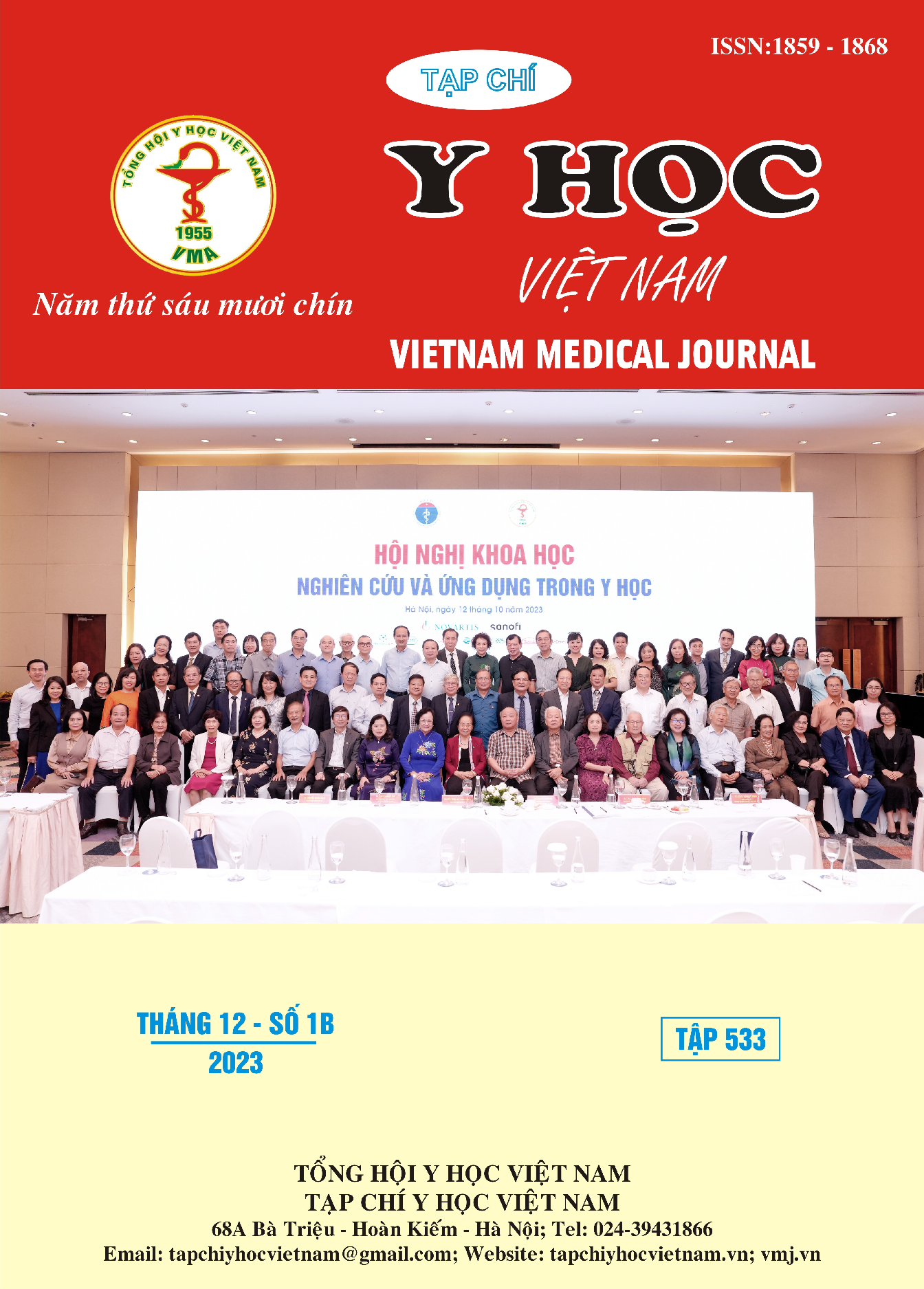FEATURES OF PATIENTS WITH GASTROINTESTINAL HELMINTHIASIS AT THUAN AN MEDICAL CENTER, BINH DUONG PROVINCE
Main Article Content
Abstract
Objectives: Gastrointestinal helminthiasis remains a silent but persistent health issue in the community. The study was conducted to evaluate the characteristics of patients with gastrointestinal helminthiasis. Materials and method: This was a cross–sectional study of 77 patients diagnosed with helminthiasis at Thuan An Medical Center, Binh Duong Province (from September 2019 to April 2020). Helminthiasis was confirmed by fecal direct microscopy, Willis method, and Sasa’s modified culture method; pathogens were identified based on the morphology of the larva. Data was analysed using SPSS 25. Results: Among 77 patients, strongyloidiasis accounted for 64,9% of the total (50/77 cases), while the proportion of hookworm infection was 29,9% (23/77 cases) and only 4 cases of co-infection (5,2%); strongyloidiasis was statistically associated with hookworm infection (p-value < 0,05). Only 12 patients presented with gastrointestinal symptoms (15,6%). Hematological results showed that anemia occurred in 13 cases (16,9%); there was no significant difference in leukocyte values between hookworm infection and strongyloidiasis (p-value > 0,05). Conclusion: strongyloidiasis is more prevalent and helminthiasis symptoms vary between cases.
Article Details
References
2. Phùng Thị Thanh Thuý, Lê Thành Đồng và cs. (2019). “Tỉ lệ nhiễm giun, sán ở khu vực Nam Bộ - Lâm Đồng và hiệu quả của các biện pháp phòng chống giun, sán dựa vào cộng đồng”. Tạp chí Y học Thành phố Hồ Chí Minh. Tập 23 (số 5):106–114.
3. Bộ Y tế (2021). Kế hoạch phòng chống bệnh ký sinh trùng thường gặp tại Việt Nam giai đoạn 2021 - 2025. Số 1745/QĐ-BYT; 39 trang.
4. Kuang F. L. (2020). “Approach to the patient with eosinophilia”. Med Clin North Am. 104(1):1–14. doi:10.1016/j.mcna.2019.08.005
5. Buonfrate D., Fittipaldo A. và cs. (2021). “Clinical and laboratory features of Strongyloides stercoralis infection at diagnosis and after treatment: a systematic review and meta-analysis”. Clin Microbiol Infect.;27(11):1621–1628. doi:10.1016/j.cmi.2021.07.016
6. Fleitas P. E., Kehl S. D. và cs. (2022). “Mapping the global distribution of Strongyloides stercoralis and hookworms by ecological niche modeling”. Parasit Vectors. 15(1):197. doi:10.1186/s13071-022-05284-w
7. Hu Z., Chen H. và cs. (2019). “Correlation between hematological parameters and ancylostomiasis: A retrospective study”. J Clin Lab Anal. 33(3):e22705. doi:10.1002/jcla.22705
8. Sakyi S. A., Amoani B. và cs. (2022). “Assessing the role of eosinophil-mediated immune response markers in detecting hookworm infection: A case-control study in Kintampo, Ghana”. Health Science Reports. 5(4):e674. doi:10.1002/hsr2.674


